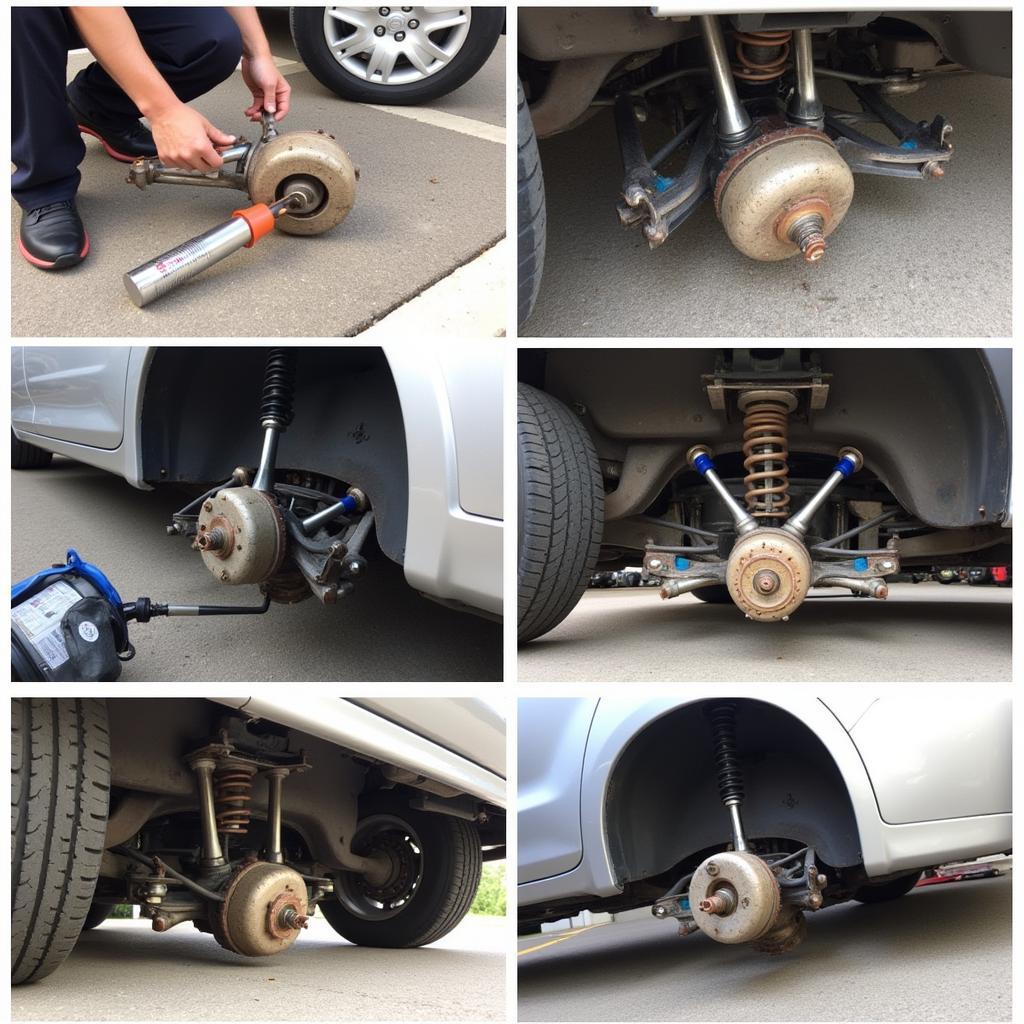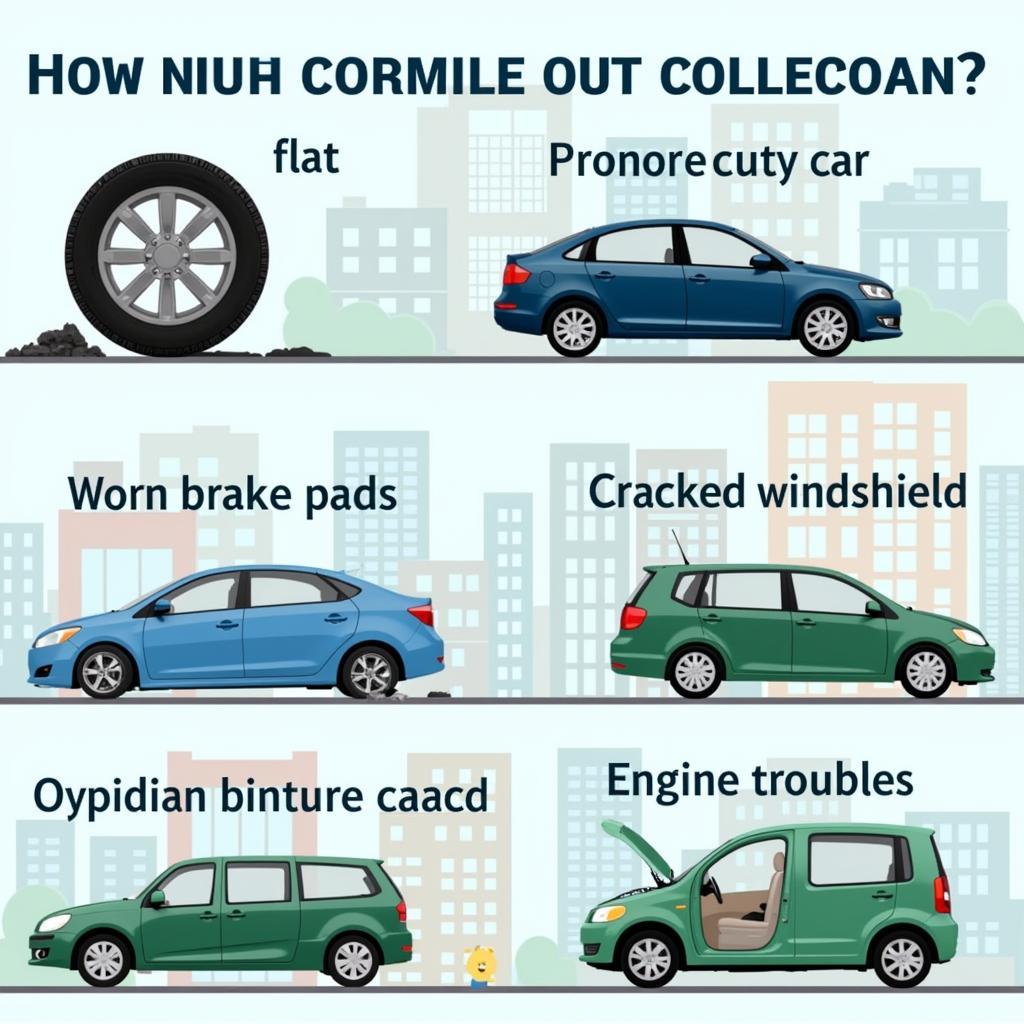Finding the Easiest Car To Fix Yourself can save you significant time and money. Whether you’re a seasoned DIYer or just starting out, choosing a vehicle known for its simple maintenance and readily available parts is crucial. This guide will explore some of the easiest cars to work on, common repairs you can tackle yourself, and tips for successful DIY auto maintenance.
Choosing the Easiest Car to Fix Yourself
Several factors contribute to a car’s DIY-friendliness. Accessibility to parts, clear documentation, and a simple design are key. Some of the easiest car to fix yourself often include older models, particularly those with less complex electronic systems.
Factors to Consider When Choosing a DIY-Friendly Car
- Part Availability: How easily can you find parts? Are they affordable and readily stocked?
- Online Resources: Is there a strong online community or forum dedicated to the car model? This can be invaluable for troubleshooting and finding DIY guides.
- Simple Design: A less complex engine bay and straightforward mechanical systems make DIY repairs much easier.
- Clear Documentation: A comprehensive repair manual is essential. Look for models with readily available and detailed service manuals.
Common Car Repairs You Can Do Yourself
Even with limited experience, several car repairs are surprisingly easy to handle. These include:
- Changing the Oil and Filter: A routine maintenance task that can be completed with basic tools.
- Replacing Air Filters: A simple swap that improves fuel efficiency and engine performance.
- Changing Spark Plugs: Relatively straightforward on many models and can significantly boost engine performance.
- Replacing Wiper Blades: A quick and easy fix for improved visibility.
- Changing a Flat Tire: A necessary skill for every driver.
Step-by-Step Guide to Changing Your Oil
- Gather your tools: wrench, oil filter wrench, new oil, new filter, drain pan, funnel.
- Warm up the engine: This helps the oil flow more easily.
- Locate the oil drain plug: Consult your owner’s manual.
- Drain the old oil: Place the drain pan beneath the plug and carefully remove it.
- Replace the oil filter: Unscrew the old filter and lubricate the gasket of the new one before installing.
- Replace the drain plug: Tighten securely.
- Add new oil: Use the correct amount specified in your owner’s manual.
- Check the oil level: Use the dipstick.
Tips for Successful DIY Car Repairs
DIY car repair can be rewarding, but it’s important to be prepared.
- Invest in Quality Tools: A good set of tools makes the job easier and safer.
- Consult Your Owner’s Manual: This is your best resource for specific instructions and specifications for your vehicle.
- Start Small: Begin with simple tasks like changing wiper blades before tackling more complex repairs.
- Take Your Time: Rushing can lead to mistakes. Work methodically and carefully.
- Don’t Be Afraid to Ask for Help: Online forums and communities can provide valuable advice and support.
“Starting with simple maintenance like oil changes is a great way to build confidence and save money.” – John Davis, Automotive Engineer at Autotippro.
Finding the Easiest Car to Fix Yourself: Conclusion
Choosing the easiest car to fix yourself involves considering factors like parts availability, online resources, and design simplicity. With the right car and a bit of patience, you can save money and gain valuable skills. Don’t hesitate to contact Autotippro at +1 (641) 206-8880 or visit our office at 500 N St Mary’s St, San Antonio, TX 78205, United States for any assistance you may need.
“Choosing a car with good online resources can be a game-changer for DIY repairs.” – Maria Sanchez, Lead Mechanic at AutoTipPro.
FAQ
- What are the easiest cars to work on for beginners? Older models with simpler mechanical systems and readily available parts are often a good starting point.
- What are some common car problems I can fix myself? Changing oil, replacing air filters, spark plugs, and wiper blades are all relatively easy DIY tasks.
- Where can I find reliable information for DIY car repairs? Owner’s manuals, online forums, and YouTube tutorials can be valuable resources.
- What tools do I need for basic car maintenance? A basic set should include wrenches, screwdrivers, sockets, and pliers.
- Is it worth it to fix my own car? DIY car repair can save money and be a rewarding experience.
- What are the easiest car brands to maintain? Certain brands are known for their DIY-friendly design and readily available parts. Research is key.
- How can I find the easiest car to fix myself based on my skill level? Start with simple tasks and gradually work your way up to more complex repairs as you gain experience.






Leave a Reply